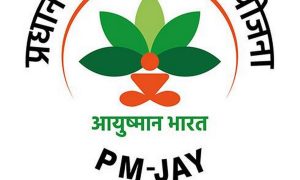While gold may not be enticing enough for new investors, it is still advisable to have some allocation to the yellow metal in long-term portfolios. And while there are several ways to invest in gold like buying physical gold, exchange-traded funds (ETFs) and funds, the cleanest, tax-efficient way is probably buying Sovereign Gold Bonds or SGBs.
SGB is the only gold-denominated instrument that not only allows you to participate in gold’s price appreciation but also provides an additional stream of interest income (2.5 percent per annum). And the best part is that if you hold these bonds till maturity, the returns from capital gains are entirely tax-free.
Now there are two ways to invest in SGBs. One is to buy directly from the Reserve Bank of India (RBI) during primary issuance. The RBI regularly issues new gold bond tranches several times a year, which one can buy. The other option is to purchase older SGB issues which are available in the secondary market.
Read More: Google layoffs: ‘Core’ employees fired, Sundar Pichai moving positions to India
Why people get attracted to SGBs in secondary markets?
SGBs have an eight-year tenure. Many times those who have already invested in older SGBs may not be able to hold the bonds for the full 8-year period. Such people go to exchanges to sell their holdings (just like it happens in stocks).
And generally, the existing SGBs trading in the secondary market are available at a discounted price. And the reason is that since there are very few buyers of old SGBs, the demand is less and hence, sellers quite often need to sell at comparatively lower prices to generate/attract demand.
So, technically due to the availability of low-demand-fuelled discounts, one can buy older SGBs at slightly cheaper rates than the prevailing gold prices. Not always, but many times and quite often.
To date, there have been 67 SGB issues since 2015. And while three original issues have matured, there are still 64 old issues, which are in different stages of maturity. Many of these are available on exchanges for secondary sale. Since different issues have varying liquidity depending on residual maturity period, etc, at times, you may find that higher discounts are available in less liquid issues. Occasionally, the bonds may quote at a premium also due to increased supply. But in general, these trade at some discount due to lack of demand.
Read More: Gold Price Falls In India: Check 22 Carat Rate In Your City On May 02
The secondary market is not that simple to comprehend
So, does it mean that you should always purchase SGBs in secondary markets?
The decision shouldn’t be based solely on the discounted price that you are getting in the secondary market.
One of the biggest issues is low volumes in issues that have reasonably large discounts that one would want to benefit from. In fact, there are days/weeks where many SGB issues show zero volumes.
You may want to buy 100 old SGB units. But there may not be enough sellers available. It is possible that 10 units may be available at a 1 percent discount and the remaining 90 units may only be getting a 0.5 percent discount.
If the discount isn’t large, then it doesn’t make sense to purchase from the secondary market as we still haven’t considered the brokerage here, which you need to pay when you buy SGBs in the secondary market. This brokerage is an expense and will reduce net returns.
All said and done, I personally believe that only those investors who can hold the SGBs till the full (residual) maturity period should consider buying SGBs in the secondary market.
Because, if they exit before the actual maturity by trying to sell in the secondary market, they may end up losing the tax benefit on gains made on SGBs, which otherwise are available if held till maturity. Not only that, they may also face the same issue or low demand when they go to sell, which in the first place allowed them to purchase at a discount earlier in the secondary market.
Read More: Petrol, Diesel Fresh Prices Announced: Check Rates In Your City On May 2
Actual yield of 2.5 percent interest for SGBs from secondary market
If you purchase SGB in the primary issue, you get 2.5 percent interest paid semi-annually on the face value. But how much interest is received when you buy SGB from the secondary market?
You will still get 2.5 percent interest if you buy SGBs from the exchange. But the interest will be calculated on the original issue price and not your purchase price.
So, say you purchased a 3-year-old SGB at Rs 6,000 (with an issue price of Rs 5,000). In this case your 2.5 percent interest will be calculated on Rs 5000, which is Rs 125. So, your actual yield will be Rs 125/Rs 6000 = 2.08 percent.
To summarise, while there is a mathematical case to purchase SGBs from the secondary market, the actual benefit might be limited and vary on the discount available, residual period, the intrinsic value of bonds (when one considers the present value of future interest payouts among other things), brokerage costs, taxation, etc.
So be careful when choosing between new or existing SGBs. Don’t just look at the price discounts and jump the gun.





































